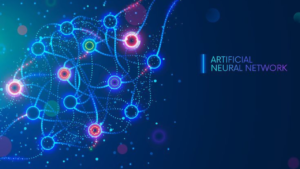Artificial Neural Networks also known as Neural Networks are a type of model derived from human neural systems that are intended to analyze data through layers. Such networks making use of learning rules are particularly suitable for dealing with sophisticated data patterns. This makes them versatile to be used in several task solving in many different fields ranging from health to engineering since their network structure is diverse.
Foundations of Neural Networks: Inspired by Biology and Key Components
Artificial neural networks named after the 있다는 biological cells that form the human brain play a crucial role in creating progressive learning algorithms. Such systems process information by the network of nodes that resembles neurons. Self-adjustment is one of the strengths of using deep learning and machine learning; in this case, neural networks. This approach has lead to such developments as deep neural systems, which changed the approach ANNs apply toward solving complex computational problems.
Elements of neural networks are hidden layers, nodes or neurons, weights, and biases, activation functions. These elements allow for learning algorithms with high efficiency levels as performance is promoted. Daily the deep neural architectures are used in machine learning to learn multiple features from data through the use of numerous hidden layers. By these mechanisms, the operation of neural networks is well demonstrated in various fields to solve real-world problems through well-defined learning procedures within ANNs.
Understanding Neural Networks: Types, Functionality, and Training Process
Neural networks in their different types are; feed forward; recurrent neural networks; and convolutional. Every type of network is designed for particular uses, and the formation of the net determines its capacity. There is a need for adequate structures, and some of them include recurrent neural networks for instance; they are adept at handling of sequence data.
Neural networks operate using layers where every neuron takes data through particular processes before moving them to the other layer. This enables deep learning system processes to look for a pattern and or extract significant information. The complex hierarchy of outcomes increases the connectivity of the model, thus improving its performance in terms of manipulation and the finality of results in computational iterations.
Neural network training occurs through feeding the training data using techniques like the supervised learning technique. As it transits in the training phase, weights and/or biases are tweaked to reduce mistake and increase precision of a model. It decides layers because several layers work in a dynamic manner to transfer the data through several layers it uses deep learning principles to enable proper connection.
Artificial Neural Networks: Applications, Benefits, and Challenges
Artificial Neural Networks are becoming a ubiquitous element in fields such as computer science, healthcare, and finance because of diverse uses. The ability to stand out has been recorded from using feedforward networks in data classification to the processing of the input data for predictions. By operating with a neural network model that can learn high-level patterns, these systems improve performance and accuracy, reinventing approaches to solving problems for many industries.
That is why one can outline certain issues with neural networks: the former is highly dependent on extensive inputs, the latter is computationally intensive. Since neural network model is a map from one layer to the next layer, it is essential that equal focus is paid on the layers /connections and the next layer must optimally process the data. Lack of flexibility in the learning method and interpretability represents challenges which however, are worked on continuously with advancements in computer science.

The Evolution and Impact of Artificial Neural Networks on the Future
Recent developments in artificial neural network have answered some of the questions posed about the networks by presenting enhanced features of the said networks through changes in the network structure and the learning algorithms used in the training of the network. Informed by the biological neural system these advancements have enabled learning network to solve more complication problems. Application of artificial networks increase by such methods as reinforcement learning, positioning them firmly into the sphere of the modern computational progression.
Artificial neural networks play an important role of designing the future through forming reliable solutions in various disciplines. Due to the characteristics of the learning network and the adaptive network architecture, they can perform complex tasks. Across the spectrum of healthcare to engineering, Artificial networks are gradually achieving applications for data systems, signifying about the paradigm shift possible in deigning and development of data networks.
Consequently, artificial neural networks act as the foundation of today’s computation systems because of their effective dynamic learning rules and networks that can be adopted for various applications. Like biological neural systems they offer the basis for powerful tools of innovation. During the research, it is clearly observed that through more effectiveness of reinforcement learning and other advancements, artificial neural networks will remain crucial in future development of other technologies.


